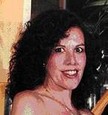You're in the mall, the supermarket, or heading for the departure gate at the airport when you see someone ahead of you slump to the ground. As you glance around to see if anyone else is aware of what just happened, you notice a sign that says "AED” or “Defibrillator" with an arrow pointing to a box. Would you know what to do?
According to the American Heart Association, approximately 350,000 people die from sudden cardiac arrest each year in the United States alone. The majority of people exhibit no prior symptoms, so they have no warning. The current national survival rate for Sudden Cardiac Arrest is less than 5%, often because emergency medical services cannot reach them in time. The likelihood of successful resuscitation decreases by about 10% with every minute that passes.
Sudden Cardiac Arrest is most often the result of the electrical activity of the heart becoming disorganized, causing it to beat ineffectively. This arrhythmia is called ventricular fibrillation. This results in a lack of blood flow or pulse, causing loss of consciousness, cessation of breathing, and leads to death very rapidly unless properly treated. CPR is important in maintaining blood flow to the vital organs of the body for a short period of time, but defibrillation is the most effective treatment for returning a heart in ventricular fibrillation to its normal rhythm. Until recently, only credentialed health professionals and trained emergency medical service personnel were able to provide defibrillation to victims of Sudden Cardiac Arrest. Precious minutes were lost from the time of collapse to the arrival of life-saving equipment. With widespread access to defibrillators, it is estimated that an additional 40,000 lives could be saved each year in the U.S. alone.
The efficacy of defibrillation is directly tied to how quickly it is administered. The American Heart Association has determined that maximum effectiveness is achieved if defibrillation takes place within 3 to 5 minutes of collapse. After 10 minutes, the likelihood of a positive outcome is extremely poor. The importance of quick and effective intervention is outlined in the AHA's "Chain of Survival" concept; early access, early CPR, early defibrillation, early advanced care. (www.americanheart.org)
The proliferation of Public Access Defibrillators (PAD) since the 1990s and their accompanying PAD Programs has done much to educate the public about early access defibrillation. Public access defibrillators can be found in mass transit terminals, on commercial airplanes and in shopping malls. They are currently required by law in Federal and State government buildings, health clubs and nursing homes, with numerous bills now before Congress to provide them in an ever growing list of public facilities.
The American Heart Association and the American Red Cross are just two of the nationally recognized organizations providing lay persons all of the information and training necessary to competently assess a victim, administer CPR if indicated, and to operate an AED safely and effectively. Numerous local training and consulting organizations accredited by the American Heart Association or the American Red Cross are also available to provide training and certification.
Keeping knowledge current increases confidence. With increased confidence, the likelihood of bystander participation and positive intervention outcome increases as well. Consider the millions of "Baby Boomers" between 45 and 60-plus years of age. And getting older. They might be your customers, neighbors, co-workers, parents, or even you.
Anyone has the ability to save a life. With just a little training, everyone can have the chance to be a hero.
Save a life. Go ahead. You can do it.
: Patti Armus is a registered nurse with extensive experience in critical care. She is a health coach with expertise in cardiac health, and develops workplace wellness programs. She has designed and implemented education and precepting programs, cardiac rehab, and public access defibrillator programs. She is certified as an AHA BLS, AED, and first aid instructor. Currently the President and CEO of My CardioResource and My-Med-Keeper.

Post new comment
Please Register or Login to post new comment.